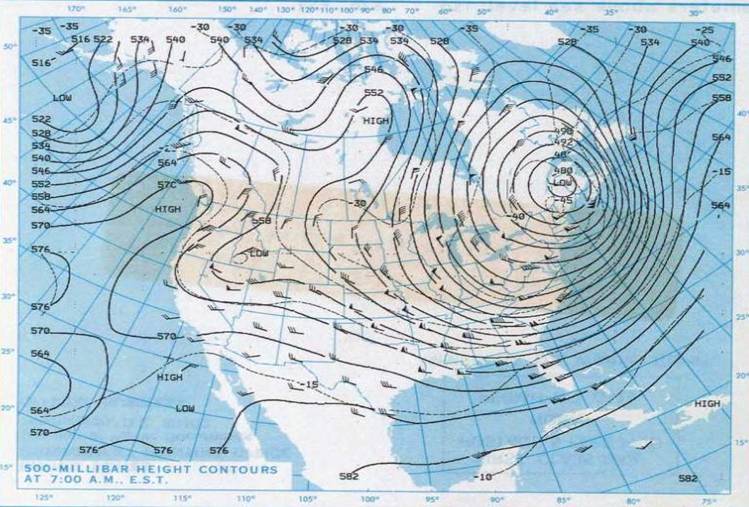 |
| Polar Vortex over Maine, 1985 |
The polar vortex is circulation of upper-level,
stratospheric winds that normally surround the North Pole. The circulating winds flow around a low-pressure system in a counterclockwise direction.
Occasionally this vortex becomes distorted so that it dips much farther south allowing lobes of arctic air to blanket parts of North America, northern Europe and Asia.
When the polar vortex is perturbed, temperatures tend to be colder in the mid-latitudes across the US, Europe, and Eurasia.
 |
| Perturbed Polar Vortex |
The vortex typically lies directly over the North Pole and confines the cold air to the Arctic. Warm air masses pushing north will occasionally shift the polar vortex off the North Pole.
Normally circular, the vortex can become distorted and elongated, as shown in the animation, allowing arctic air to spill into the mid-latitudes.
"Men argue. Nature acts."
― Voltaire
Scientists have discovered a statistically significant link between Siberian snow cover and the behavior of the winter polar vortex.
AER scientists (
Atmospheric and Environmental Research) use Siberian snow cover measured from the previous October to project the strength of the winter polar vortex. Using those projections, AER forecasts winter temperatures for much of North America and Northern Europe and Northern Eurasia.
“Three feet of ice does not result from one day of cold weather.”
― Chinese Proverb
The polar vortex of January 2014 could be a side effect of climate change. Climate scientists recognize that distortions of the jet stream cause extreme cold snaps in winter and anomalous heat waves in summer.
REFERENCES
.png)









